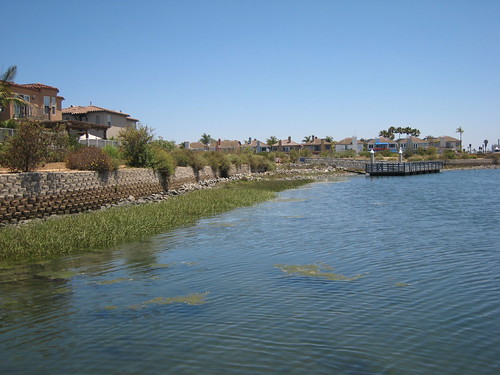
This park is a gem. A little hard to get to, but well worth the trip.
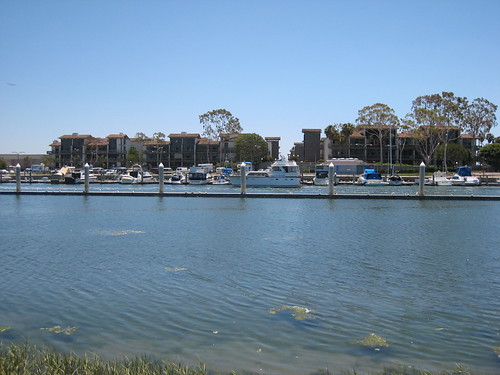
There are many short trails to wander about the park--though nothing you could rightfully call a hike. Benches provide many pleasant places to sit and gaze at the busy boat traffic in Alamitos Bay.
This area is a restoration site that was created as mitigation for wetlands lost on Santa Catalina Island. It's a bit non-traditional of a restoration, becaues much of the restored habitat contains species endemic to Catalina Island. Purists (like me) might argue that restoring a nonnative habitat (nonnative to the mainland US) doesn't really count as a restoration. But I won't argue that the park is beautiful and has great environmental and educational value.

Unlike the Golden Shore Preserve, this restoration includes a good deal of upland habitat. The wetlands are small, but very easily viewed from shore or from the viewing docks.
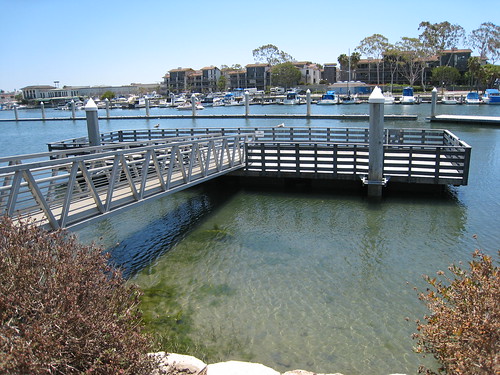
Viewing docks let you get closer to the water and watch marine life. Birds also like to perch on these docks as well!
From the dock and near the shore, you can examine the mudflats at low tide. The mudflats are full of burrows created by fiddler crabs:
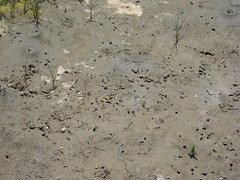
To see the crabs, you must stand still for a while--they scurry into their holes when you approach, and will only exit once they feel safe.

These crabs have an enlarged claw (usually the right) which they swing and wave to establish territories and attract mates.
Fiddler crabs wave their claws to signal to each other.
At slightly higher elevations, the mudflats turn into salt marshes. At the Dunster Preserve, the marshes were planted with California cordgrass (Spartina foliosa), salt grass (Distychlis spicata), pickelweed (Salicornia sp.), and alkali heath (Frankenia salina). The last two are susceptible to parasitism by an unusual plant known as dodder (in this case, salt-marsh dodder).
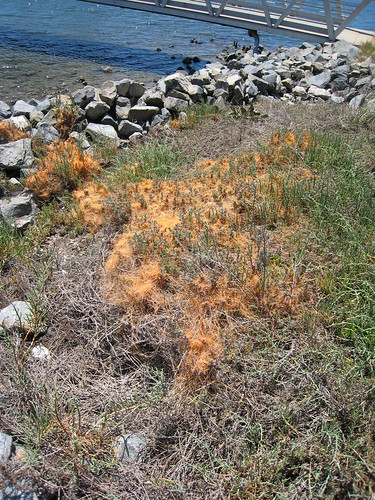
A small restored salt marsh area, heavily parasitized by dodder Cuscuta salina)
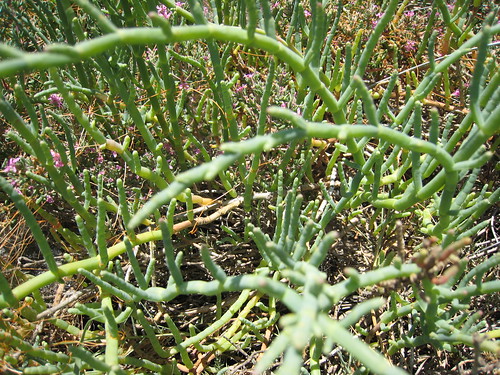
Pickelweed (Salicornia sp.)
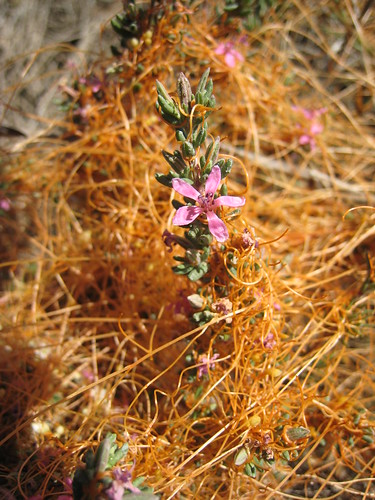
Alkali heath (Frankenia salina), heavily parasitized by salt-marsh dodder (Cuscuta salina). Alkali heath is unusual for salt marsh plants in that it has showy flowers that attract insect pollinators.

This pretty little plant was also growing in the salt marsh area. It resembles crystalline ice plant (Mesembryanthemum crystallinum), but I'm not sure of the ID.
The upland area contains many of the same plants you might expect from the coastal sage-scrub areas that used to dominate Long Beach:
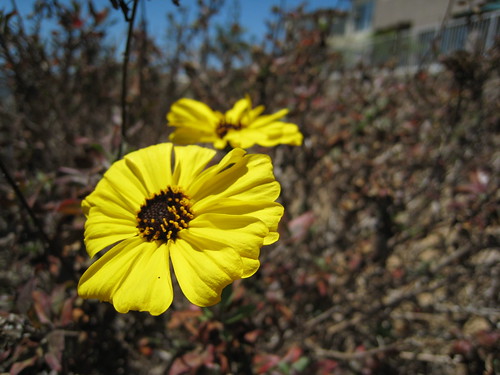
California encelia, or bush sunflower (Encelia californica)

Quail bush(Atriplex lentiformis)

Lemonade berry Rhus integrifolia
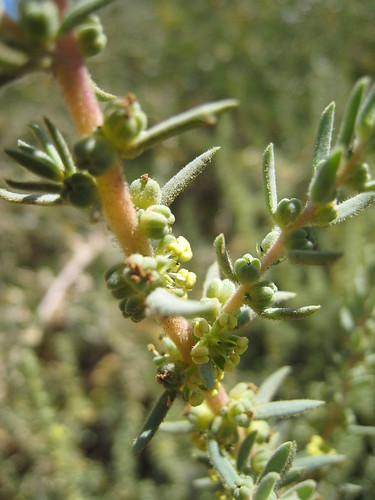
Estuary sea-blite (Suaeda esteroa)

Coast prickly-pear (Opuntia littoralis)
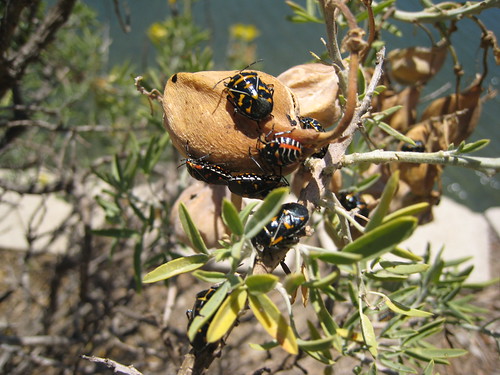
Bladderpod (Isomeris arborea), with nymphs of a harlequin bug (Murgantia histrionica).
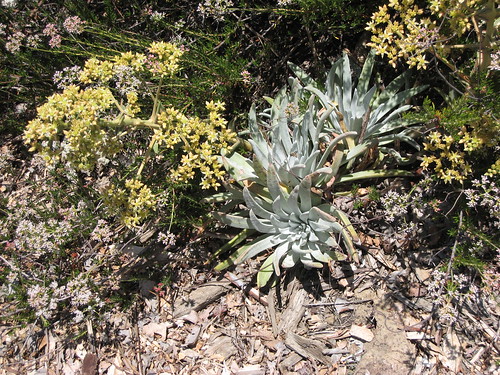
Chalk dudleya (Dudleya sp.)

Golden yarrow (Eriophyllum confertifolium)
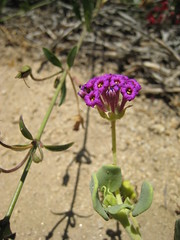

Red sand-verbena (Abronia maritima). Note how the flower stalks are held erect, but the seed pods dangle straight down!
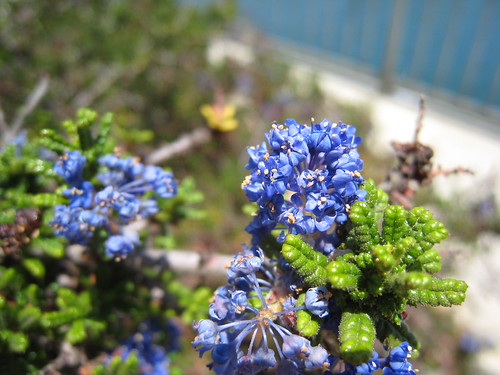
Wartleaf ceanothus (Ceanothus papillosus sp.)
But the preserve also showcases a number of unique plants endemic to Santa Catalina Island, located 25 miles to the southwest:
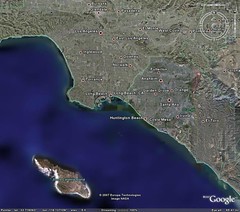
Santa Catalina--like the other California Channel Islands--is a botanical wonderland, filled with many unusual plant species found nowhere else on earth. (Animals too!) Many of these rare plants have been included in the Dunster Reserve as mitigation for habitat loss on the island. These unusual island plants are often similar to mainland forms, but gigantized in some way or another.
For example, compare the mainland coreopsis:

Corepsis (Coreopsis sp.)
with its island relative, the giant coreopsis:
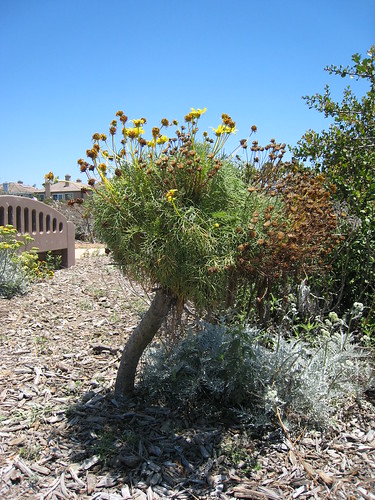
Giant coreopsis Coreopsis gigantea. Even though it looks like topiary, this specimen displays the natural growthform of this species.
Similarly, compare the common California buckwheat of the mainland:
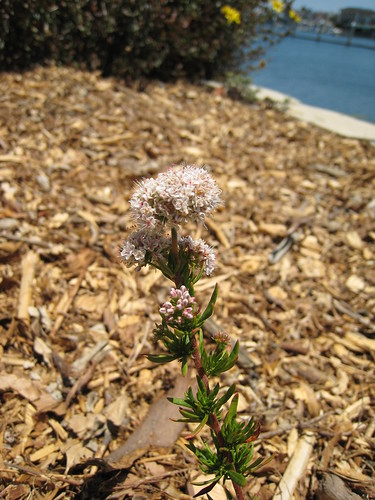
California buckwheat (Eriogonum fasciculatum)
with its giant island relative:

Giant buckwheat (Eriogonum giganteum)
Other unusual island endemics are also represented in the park:
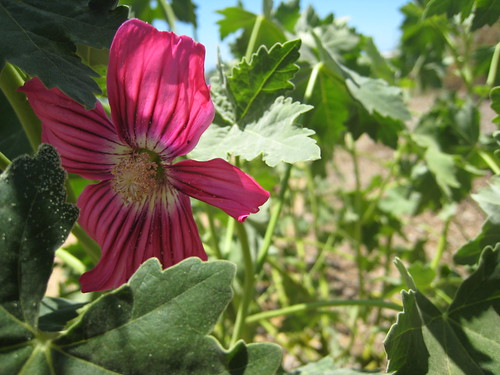
Island mallow (Lavatera assurgentifolia)
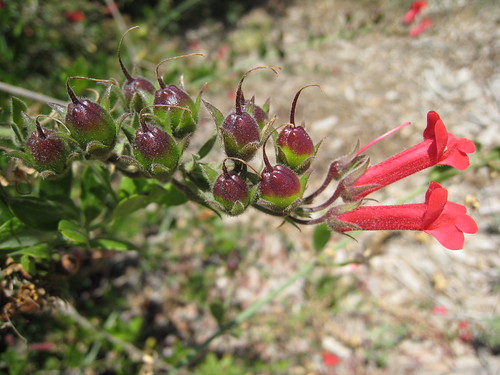
Island snapdragon (Galvezia speciosa)
Partial list of plants:
Coastal dudleya (Dudleya caespitosa)
Chalk dudleya (Dudleya pulverulenta)
Mulefat (Baccharis salicifolia)
Coyote bush (Baccharis pilularis)
Golden yarrow (Eriophyllum confertifolium
California encelia (Encelia californica)
Bladderpod (Isomeris arborea)
Coastal prickly pear (Opuntia littoralis)
Red sand-verbena (Abronia maritima)
Estuary sea-blite (Suaeda esteroa)
Salt-marsh dodder (Cuscuta salina)
This park is perhaps the least accessible by public transit. All bus stops are about 1/2 mile away or more. You can try the 181, 182, 171, or Passport-D.
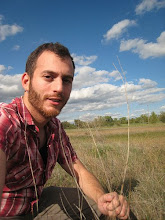

3 comments:
Thanks for this site and calling our attention to this lovely park! It's a little hard to find at first -- go toward the boathouse at the end of Boathouse road, and when you're almost at the structure you'll see a small blue sign with white letters "Jack Dunster Marine Reserve." OR -- park at the end of Spinnaker Bay Drive in the "Guest Parking" area, and then walk in either direction, looking for small sidewalks with metal fence railings that lead between the houses. These little sidewalks lead to the sidewalk on the water side of the houses that in turn leads to the park.
The park is in spring bloom right now so it's lovely with huge drifts of Catalina coreopsis, many varieties of blooming sage, and others. About half of the plants are in bloom, with the other half putting on buds and sure to bloom within the next week or so. Go right away!
The park does need to be maintained better. There are a lot of places where common southern California weeds are poking their heads up through mounded native plants, and the plants themselves need to be pruned in a lot of places to promote growth and also clear the walkways.
Thanks for this blog! We look forward to exploring other "natural spaces" inside of our favorite city.
Laurie
Cool blog! I'll definitely be checking in often.
Here's a couple of pictures I took of a Fiery Skipper the last time I went to Jack Dunster:
http://img368.imageshack.us/my.php?image=p6200009me1.jpg
http://img374.imageshack.us/my.php?image=p6200010hi8.jpg
I am doing a marine biology project on the Marine Stadium and I need to all the marine life that lives there can you tell me some
Post a Comment